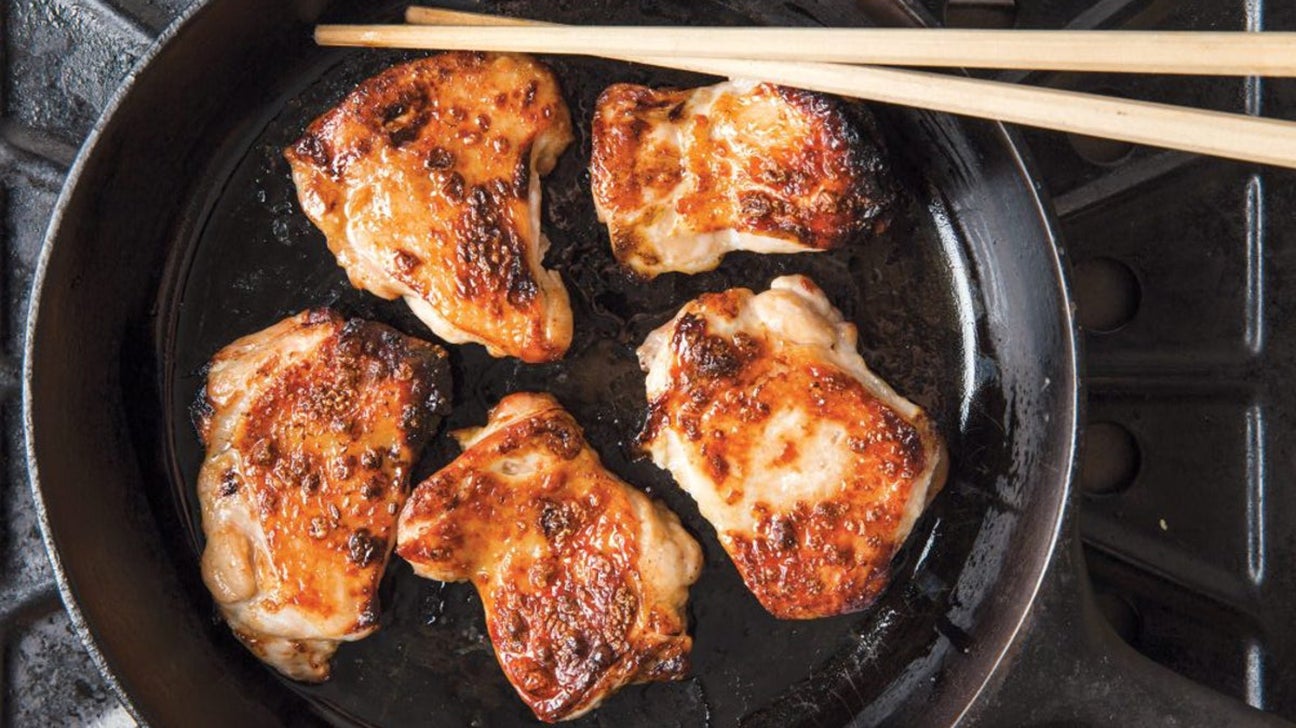
Sonoko Sakai is a master of Japanese home cooking. Her cookbook of the same name is a testament to that, a sweeping examination of the Japanese pantry and everyday recipes, along with a bevy of inventive and classic dishes. As a seasoned teacher, Sonoko knows how to expertly communicate cooking processes—from properly pickling vegetables to rolling out soba noodles at home—and she dives deep into the explanation of Japanese favorites (think dashi and Japanese milk bread), enlightening readers who might otherwise be unfamiliar.
Those armed with Sonoko’s book will be instantly captivated by her knowledge and unintimidated by even the most complicated of recipes. After all, recipes often come with step-by-step instructions and are accompanied by plenty of images—a guide so visual you’ll always know what you should be doing. Sonoko will teach you how to fillet a whole fish, provide instructions for griddling your own okonomiyaki (savory pancakes built out of eggs, cabbage, and flour, and garnished with bonito and seaweed flakes), and make mochi from scratch, wrapped around hulled strawberries.
For anyone who’s craving a replacement for their well-worn weeknight chicken recipe, look no further than Sonoko’s grilled ginger chicken with shoyu tare, a Japanese sauce swirled with mirin, sugar, and soy sauce. All you’ll need is a handful of staple ingredients—most likely already hiding in your pantry—and a few chicken thighs. The boneless, skin-on thighs are coated in ginger juice and oil, slipped into the oven to broil, then basted with the shoyu tare. The chicken skin gets crisped up from the broiler, yet remains tender and meaty inside. Serve it with a tangle of quick pickles, soba salad, or simply with a side of white rice.
Grilled Ginger Chicken with Shoyu Tare Recipe
This is a nice chicken dish I make using shoyu tare (soy sauce–based seasoning). The skin here comes out super crispy and the meat is very tender—a beautiful contrast. I like to make a large batch of shoyu tare and use it for dipping sauces and for seasoning noodle soups and braised dishes. Serve the chicken as a topping for your grain bowl or as part of your bento box with some Amazuzuke (Quick Vinegar Pickles; page 86) or First Garden Soba Salad with Lemon–White Miso Vinaigrette (page 247).
Grilled Ginger Chicken with Shoyu Tare
Serves: 2-4
INGREDIENTS
- 4 boneless skin-on chicken thighs
- ½ teaspoon sea salt
- 1 tablespoon ginger juice
- 1 tablespoon untoasted or toasted sesame oil
- ¼ cup (60 ml) Shoyu Tare
INSTRUCTIONS
- Position the top rack of your oven about 7 inches (17 cm) from the broiler and preheat the broiler. Line a rimmed baking sheet with aluminum foil.
- Make ½-inch (12 mm) slits on the meaty side of each chicken thigh, about 2 inches (5 cm) apart. Sprinkle the salt over the meat and rub it all over with the ginger juice and oil. Spread the thighs on the baking sheet, skin-side down.
- Broil the thighs until they start to brown lightly, about 3 minutes, then start basting with the shoyu tare. Let the chicken brown some more and then baste again, repeating a few more times at 2-minute intervals. Allow 8 to 9 minutes cooking time on the meat side before you flip the chicken.
- Turn the chicken over so it is skin-side up. Baste again with shoyu tare and broil until the skin is browned and crispy and the chicken is cooked and no longer pink inside, about 2 minutes. Do not flip, or the skin will lose its crispiness. Remove from the oven and let the chicken rest for 3 to 5 minutes, then slice it crosswise 1 inch (2.5 cm) thick and serve.
Shoyu Tare (Soy Sauce-Based Seasoning)
Shoyu tare is an incredibly versatile base for dip-ping sauces, stews, and noodle soups. Make dashi and season it with shoyu tare, following these ratios for various uses. You can adjust the ratios according to your palate.
Shoyu Tare
Makes: 2 cups
INGREDIENTS
- ⅓ cup plus 1 tablespoon (80 ml) mirin (hon mirin, not mirin-type)
- 3 tablespoons cane sugar
- 2 cups (480 ml) soy sauce or usukuchi shoyu (light-colored soy sauce)
INSTRUCTIONS
- Combine the mirin and sugar in a small saucepan, place over medium heat, and stir to dissolve the sugar completely. Lower the heat, add the soy sauce, and heat until it starts to simmer, about 3 minutes. Remove from heat and set aside to cool to room temperature. Store in a nonreactive container in a cool, dry place or in the refrigerator, where it will keep for up to 3 months.

0 Commentaires